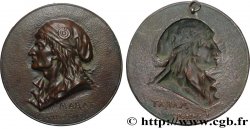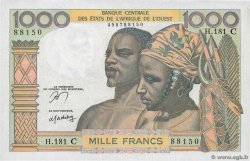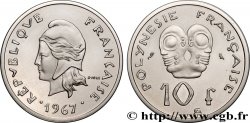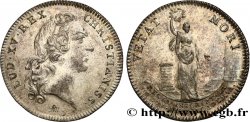fme_916635 - CONVENZIONE NAZIONALE Fonte, Hommage à Jean-Paul Marat
250.00 €
Quantità
Aggiungi al carrello

Tipo : Fonte, Hommage à Jean-Paul Marat
Data: n.d.
Metallo : bronzo
Diametro : 222 mm
Asse di coniazione : 12 h.
Peso : 1429,15 g.
Orlo : lisse
Marchio : sans poinçon
Commenti sullo stato di conservazione:
Patine hétérogène avec de hauts reliefs sur le buste. Faible usure. Métal des champs légèrement poreux
N° nelle opere di riferimento :
Diritto
Titolatura diritto : MARAT / L’AMI DU PEUPLE // NE POUVANT / LE CORROMPRE / ILS L’ONT ASSASSINE.
Descrittivo diritto : Buste habillé de profil à gauche coiffé d’un bonnet phrygien. Pendule et règle à droite.
Rovescio
Titolatura rovescio : INCUS.
Descrittivo rovescio : anneau de suspension.
Commento
Largeur : 208 mm.
Jean-Paul Marat (1743-1793) est un médecin, physicien, journaliste et homme politique français. Usurpateur de noblesse avant la chute du régime monarchique, il devient député montagnard à la Convention à l’époque de la Révolution. Son assassinat par Charlotte Corday permet aux hébertistes de faire de lui un martyr de la Révolution et d'installer pendant quelques mois ses restes au Panthéon (cf. wikipedia).
Width: 208 mm. Jean-Paul Marat (1743-1793) was a French doctor, physicist, journalist, and politician. A usurper of nobility before the fall of the monarchical regime, he became a Montagnard deputy to the Convention at the time of the Revolution. His assassination by Charlotte Corday allowed the Hébertists to make him a martyr of the Revolution and to install his remains in the Panthéon for a few months (see Wikipedia).
Jean-Paul Marat (1743-1793) est un médecin, physicien, journaliste et homme politique français. Usurpateur de noblesse avant la chute du régime monarchique, il devient député montagnard à la Convention à l’époque de la Révolution. Son assassinat par Charlotte Corday permet aux hébertistes de faire de lui un martyr de la Révolution et d'installer pendant quelques mois ses restes au Panthéon (cf. wikipedia).
Width: 208 mm. Jean-Paul Marat (1743-1793) was a French doctor, physicist, journalist, and politician. A usurper of nobility before the fall of the monarchical regime, he became a Montagnard deputy to the Convention at the time of the Revolution. His assassination by Charlotte Corday allowed the Hébertists to make him a martyr of the Revolution and to install his remains in the Panthéon for a few months (see Wikipedia).








 Segnalare un errore
Segnalare un errore Stampate la pagina
Stampate la pagina Condividi mia selezione
Condividi mia selezione Fai una domanda
Fai una domanda Consegnare / vendere
Consegnare / vendere
 Descrittivo
Descrittivo















